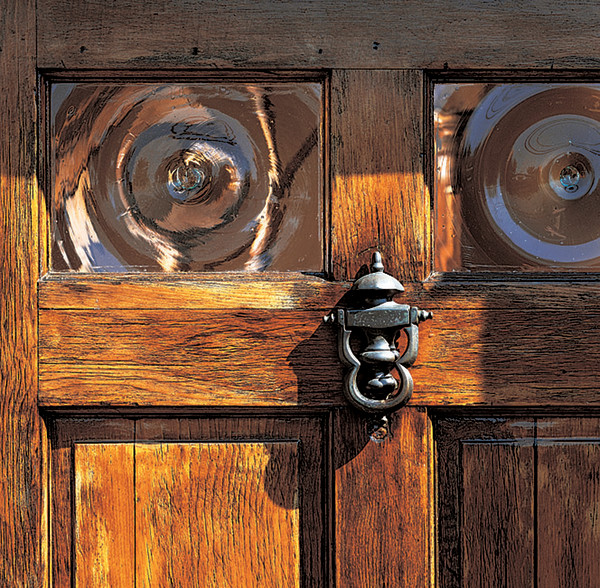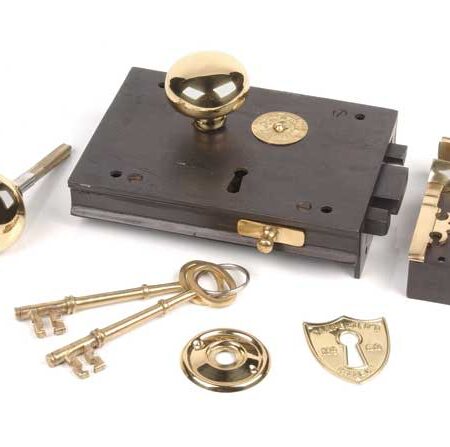This content was originally published on OldHouseOnline.com and has been republished here as part of a merger between our two businesses. All copy is presented here as it originally appeared there.
A bullseye (manufacturers’ spelling) is the result of producing crown glass, a common process until the 19th century. The bullseye comes from a mouth-blown rondel that has been cut down to make square or rectangular panes. Before the advent of modern glass manufacture, gaffers or glassblowers made windowpanes for wealthier customers by using only the flat, thinner, transparent outer edges cut from large rondels. The center piece, thicker and more opaque, “flawed“ by a break-off pontil mark (navel) and ripples, went to a less fussy buyer or was used in an outbuilding.

Restorers of early homes created a market for new bullseye glass, for use especially in doors and transoms. Now hand-made bullseyes are considered art glass and find their way into new applications. Kokomo creates mouth-blown bullseye glass in many shapes and sizes. Kokomo Opalescent Glass, (765) 457-1829, kog.com










